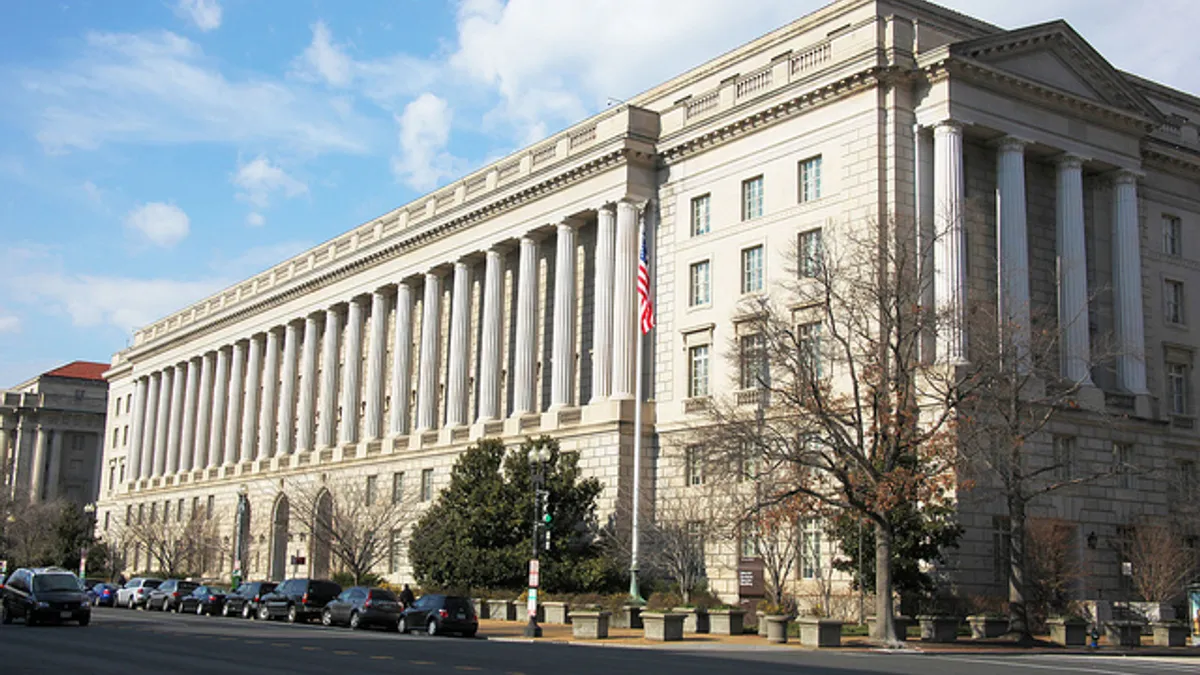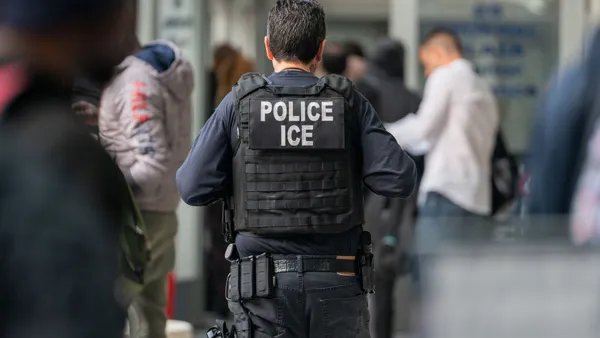UPDATE: April 1, 2020: The IRS published Wednesday an updated FAQ document further detailing the tax credits available to small and midsize businesses that must provide emergency paid leave under the Families First Coronavirus Response Act (FFCRA).
To claim the credits, eligible employers must report their total qualified leave wages and the related credits for each quarter on their federal employment tax returns, which is usually done via Form 941, the Employer's Quarterly Federal Tax Return, IRS said.
Dive Brief:
- Employers subject to the Families First Coronavirus Response Act (FFCRA) will be eligible for two new refundable payroll tax credits that will "immediately and fully reimburse them" for complying with its paid leave mandate, the IRS and U.S. Department of Labor (DOL) announced March 20.
- The credits are designed to grant 100% reimbursement for paid leave pursuant to the FFCRA, DOL said. Health insurance costs are included in the credit. Employers face no tax liability and self-employed individuals will receive an equivalent credit. For the law's emergency Family and Medical Leave Act (FMLA) leave, the credit is equal to two-thirds of the employee's regular pay, capped at $200 per day or $10,000 in the aggregate. Up to 10 weeks of qualifying leave can be counted towards the credit.
- The credit available for FFCRA's paid sick time differs depending on how an employee uses the time. If the employee is unable to work because of a quarantine or self-quarantine or has COVID-19 symptoms and is seeking a medical diagnosis, employers may receive a refundable sick leave credit for sick leave at the employee's regular rate of pay, up to $511 per day and $5,110 in the aggregate, for a total of 10 days. If the employee is caring for someone with COVID-19, or is caring for a child because the child's school or child care facility is closed or otherwise unavailable due to COVID-19, employers may claim a credit for two-thirds of the employee's regular rate of pay, up to $200 per day and $2,000 in the aggregate, for up to 10 days.
Dive Insight:
The announcement, made in conjunction with the U.S. Department of the Treasury, should be welcome news to employers affected by the FFCRA, Littler Mendelson shareholder Jeff Nowak told HR Dive in an interview.
Reacting to initial news of the law's enactment, Nowak and others expressed concerns. Though the FFCRA specified that employers would be eligible to receive tax credits, Nowak said this week that many feared the timing of the credit would be "far too late … particularly for small businesses that would be out of business by this time next year." The DOL's assurance of prompt payment may ease such fears.
As news continues to develop around the FFCRA, DOL has added additional clarifications for employers to note. First, the agency stated Tuesday that the FFCRA would be implemented April 1, 2020. In the same document, it added more information around its plan to codify exemptions for certain private entities employing fewer than 50 employees. Employers choosing to seek this exemption may need to document why their business meets the criteria for an exemption. These criteria will be set forth by DOL in future regulations.
"You should not send any materials to the Department of Labor when seeking a small business exemption for paid sick leave and expanded family and medical leave," DOL said.
The agency also previously announced that it would observe a 30-day temporary period of non-enforcement of the FFCRA once the law takes effect April 1. This non-enforcement would be in effect so long as the employer in question "has acted reasonably and in good faith" to comply with the law, DOL said, but sources previously told HR Dive that employees could still bring legal action against certain non-complying employers.
Nowak noted that the tax credit provision would allow employers to recoup the maximum paid leave costs provided for by the FFCRA. In other words, if an employer provides additional paid leave beyond what is mandated by the FFCRA for a given scenario, that employer should not expect to receive a reimbursement for the cost of providing those additional amounts of leave, Nowak said.
The DOL document released Tuesday also specifies how employers should determine whether they meet the FFCRA's classification of employing fewer than 500 employees. According to Nowak, employers should look at their headcount at the time an employee requests leave. "It will be an additional burden to the employer's HR department," Nowak said. "You will be calculating coverage whenever an employee requests FMLA or paid sick leave."
DOL said it will provide a model notice of the FFCRA's requirements — which employers will then need to post in a conspicuous place on their premises — no later than March 25. Finally, the agency has said it will hold a "national online dialogue" allowing employers to comment on the DOL's compliance materials and outreach strategies related to the implementation of the FFCRA through March 29.















